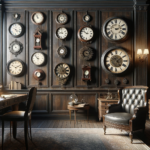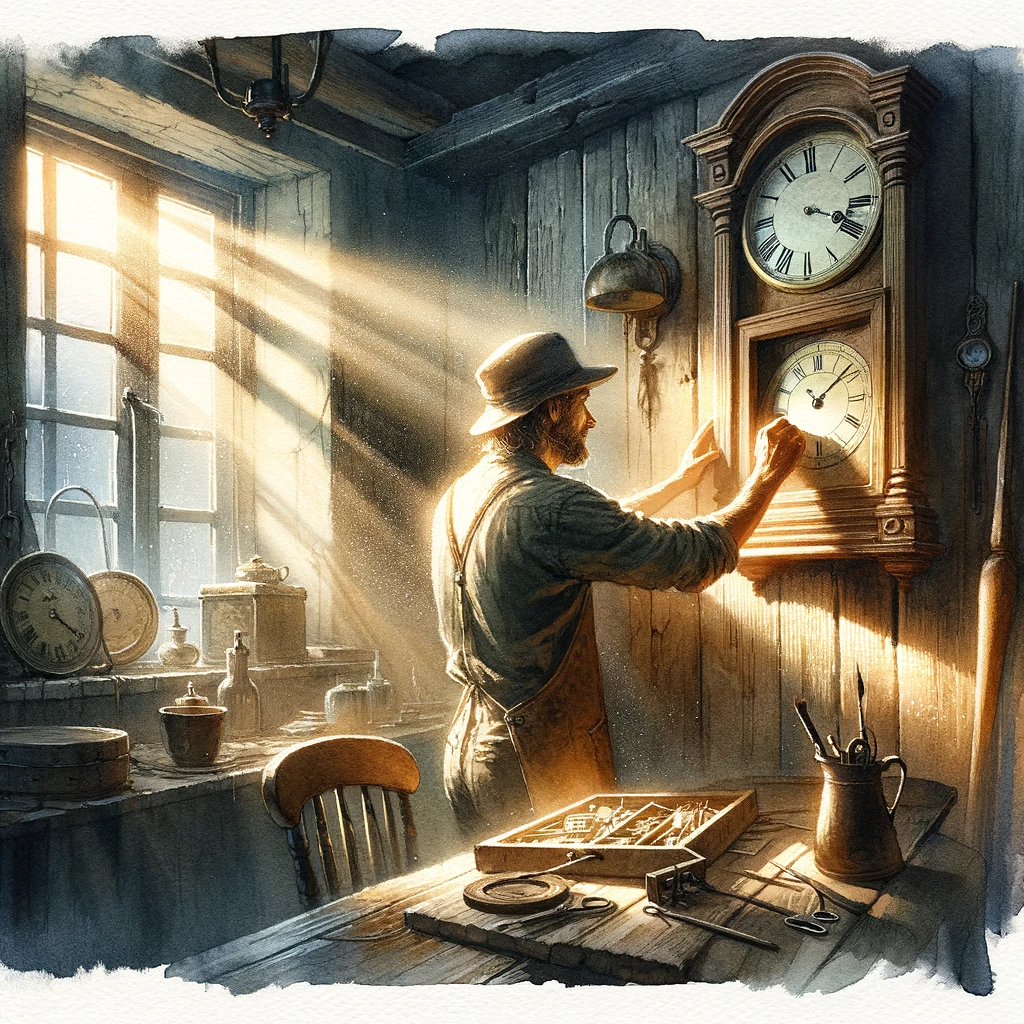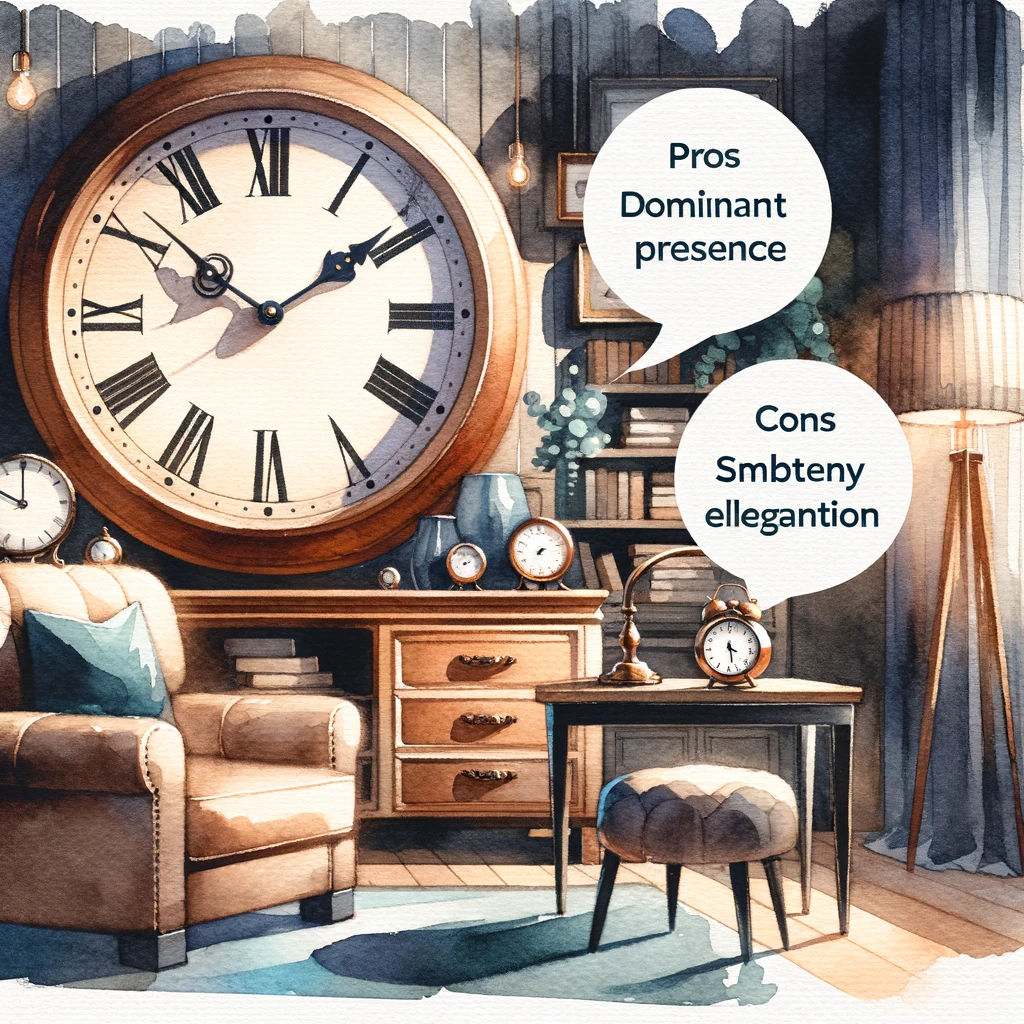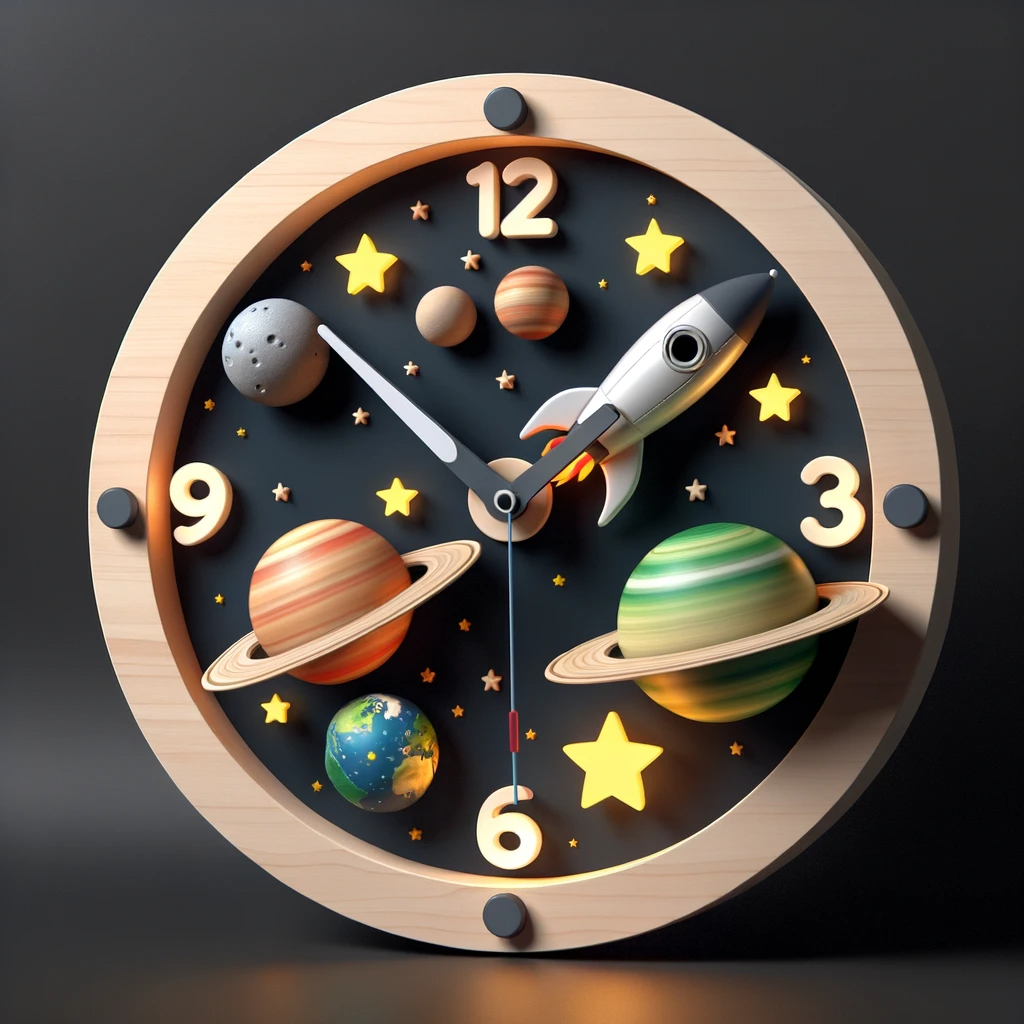Introduction
The Silent Observers of Time

Wall clocks, often overlooked in the era of digital devices, hold a significant role in our daily lives. These timeless timekeepers not only serve as functional tools but also contribute to the overall aesthetics of our living spaces. They quietly observe the passage of time, adding a touch of elegance and punctuality to our surroundings.
Overview of Wall Clock Types
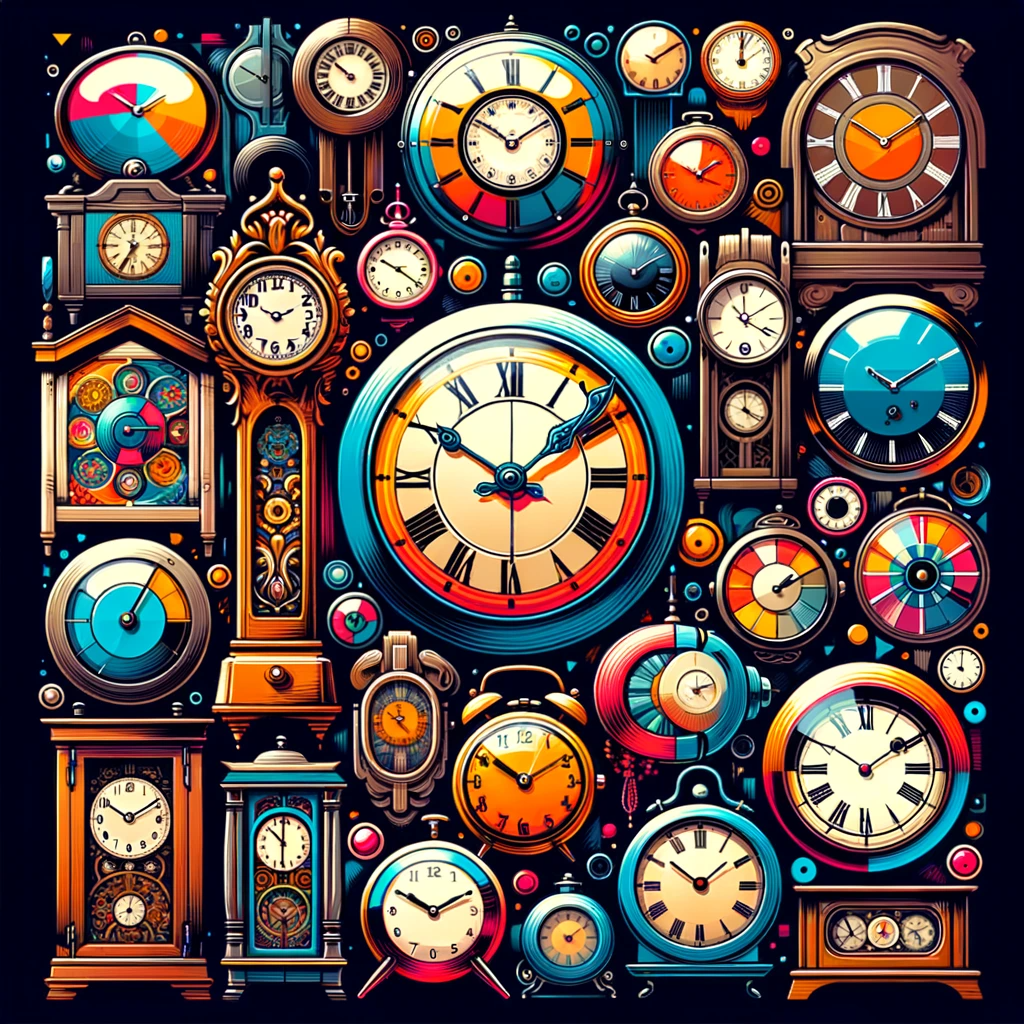
Analog, digital, and smart clocks are the three main types that dominate today’s market. Each type offers unique features and characteristics suited to different preferences and requirements. Analog wall clocks embody a classic charm with their traditional design.
They feature hour, minute, and second hands rotating on a clock face marked with numerals or Roman numerals. The smooth movement of these hands is achieved through either quartz or mechanical mechanisms, imparting an old-world appeal to any room.
On the other hand, digital wall clocks embrace modernity by displaying time digitally using LED or LCD screens. With large digits prominently showcased, they offer excellent visibility even from afar.
These clocks often provide additional functionality such as temperature display and alarms for enhanced convenience. Smart wall clocks represent the latest evolution in timekeeping technology by integrating advanced features and connectivity options.
These clocks can be synchronized with other devices via Wi-Fi or Bluetooth connections. Users can conveniently control them using voice commands through virtual assistants like Alexa or Google Assistant.
Furthermore, smart wall clocks can seamlessly blend into smart home setups by allowing integration with other automated systems. In this content piece about different types of wall clocks: analog, digital, and smart clocks; we have covered the introduction highlighting their importance in our daily lives along with an overview of each type’s characteristics.
Analog Wall Clocks
Definition and History of Analog Clocks
Analog clocks are timepieces that display the time using traditional hour, minute, and second hands. They have been an essential part of human lives for centuries. The invention of analog clocks dates back to ancient civilizations such as the Egyptians and Greeks.
Throughout history, various cultures developed different versions of analog clocks based on their understanding of timekeeping. These early analog clocks relied on mechanisms like sundials, water clocks, and mechanical gears to track the passage of time.
Components and Working Mechanism
An analog wall clock consists of several components that work together to accurately display the time. The most prominent components include the hour, minute, and second hands along with the clock face and numerals. The hour hand indicates the current hour while the minute hand tracks minutes.
The second hand steadily moves in a clockwise direction to mark each passing second. The clock face or dial serves as a reference point for reading the time accurately.
It is usually marked with numerals representing the hours in either Roman or Arabic style. To ensure precise movement of these hands, analog wall clocks rely on either quartz or mechanical movement mechanisms.
Quartz movement utilizes a quartz crystal oscillator that vibrates when subjected to electric currents, resulting in highly accurate timekeeping. On the other hand, mechanical movement relies on intricate gears and springs to regulate hand movements.
Popular Styles and Designs
Analog wall clocks come in a wide range of styles and designs to suit different tastes and preferences. Traditional round wall clocks with Roman numerals are timeless classics that exude elegance and sophistication. These ornate clocks often feature decorative elements such as ornamental hands or intricate patterns on their clock faces.
In contrast, contemporary analog wall clocks showcase minimalist designs with clean lines and simple aesthetics. These modern interpretations prioritize functionality while offering a sleek and stylish appearance.
They often employ uncluttered clock faces with sleek hands, creating a minimalist vibe that blends seamlessly with various interior design styles. Analog wall clocks continue to be popular due to their timeless appeal, reliable functionality, and the opportunity they provide for personal expression through their diverse designs.
Digital Wall Clocks
Definition and Evolution of Digital Clocks
Digital clocks are timekeeping devices that display the time using numerical digits, rather than traditional clock hands. They have evolved significantly since their inception, with advancements in technology driving their development.
The transition from analog to digital clocks began in the mid-20th century, as electronic components became more accessible and affordable. This shift revolutionized timekeeping by introducing a more precise and easily readable display.
Features and Functionality
Digital wall clocks offer various features and functionalities that enhance their practicality and convenience. Firstly, they commonly utilize either LED or LCD displays to present the time digitally. Secondly, users can choose between different time format options, such as the 12-hour or 24-hour formats, catering to individual preferences.
Moreover, digital wall clocks often incorporate additional features beyond basic timekeeping. These may include temperature display to provide real-time weather information, date display for easy reference, built-in alarms for setting reminders or waking up, and even timers or countdown functions for specific purposes.
Variations in Design
Digital wall clocks come in diverse designs to suit different styles and preferences. Classic digital clocks typically feature large digits that are easily readable from a distance.
These designs prioritize clarity and legibility above all else. On the other hand, modern digital clocks focus on sleek aesthetics by incorporating minimalist design elements.
They may feature slim profiles with thin fonts and clean lines to complement contemporary interior decor. By continuously evolving both technologically and aesthetically, digital wall clocks have become an integral part of our daily lives – providing accurate timekeeping while offering additional functionalities to meet our various needs.
Smart Wall Clocks
An Evolution in Timekeeping
Smart wall clocks represent the integration of modern technology into our traditional timekeeping devices. These innovative clocks are designed to offer more than just the ability to tell time; they seamlessly blend advanced features and capabilities to enhance our daily routines.
Introducing Advanced Features and Capabilities
Connectivity options, voice control functionality, and integration with other smart devices are some of the impressive features that make smart wall clocks stand out.
1. Connectivity options (Wi-Fi, Bluetooth): With built-in Wi-Fi or Bluetooth capabilities, these clocks can connect to the internet or pair with other devices effortlessly. This connectivity allows for automatic time synchronization, ensuring accurate timekeeping without any manual adjustments.
2. Voice control functionality (compatible with virtual assistants): Smart wall clocks can be controlled using voice commands when paired with popular virtual assistants like Amazon Alexa or Google Assistant. By simply speaking a command, you can ask the clock for the current time, set alarms or timers, play music, and even control other connected smart devices in your home.
3. Integration with other smart devices (smart home automation): These clocks seamlessly integrate into your existing smart home ecosystem. They can communicate with other connected devices such as smart speakers, lighting systems, or thermostats to create a synchronized environment that enhances convenience and efficiency.
Examples of Popular Smart Wall Clock Brands
Several brands have embraced this technological evolution in timekeeping by introducing their own line of smart wall clocks:
1. Amazon Echo Wall Clock: Designed to complement the Amazon Echo ecosystem, this clock integrates effortlessly with Alexa-enabled devices. It displays not only accurate time but also timers set through voice commands and provides visual indicators for Alexa-powered reminders.
2. Lenovo Smart Clock: Created as a versatile bedside companion, this clock combines essential features like displaying time, weather information, and alarm functionalities. It can also serve as a smart hub for controlling other smart devices in your home, making it an all-in-one solution for your morning routine.
With their advanced features and integration capabilities, smart wall clocks redefine timekeeping by seamlessly merging technology into our daily lives. These clocks offer convenience, customization, and a glimpse into the future of timekeeping.
Unique Wall Clock Designs
Pendulum Wall Clocks: A Fascinating Piece of History
Pendulum wall clocks have a rich history dating back to the late 17th century. These clocks are renowned for their mesmerizing pendulum movements, which provide accurate timekeeping through the regulation of a swinging weight.
The mechanism behind the pendulum’s movement involves a combination of gravity and mechanical gears. As the weight swings back and forth, it powers the clock’s escapement mechanism, resulting in precise timekeeping.
Ornate Masterpieces: The Elegance of Pendulum Wall Clocks
One notable characteristic of pendulum wall clocks is their ornate designs that blend functionality with aesthetic beauty. Many antique and vintage pendulum clocks feature intricate wood carvings, decorative motifs, and embellishments that make them true works of art.
From traditional oak cases with elaborate engravings to luxurious mahogany finishes adorned with brass accents, these clocks add an air of sophistication to any room they grace. Whether displayed in a grand hallway or a cozy living space, pendulum wall clocks effortlessly become focal points that captivate attention.
Conclusion
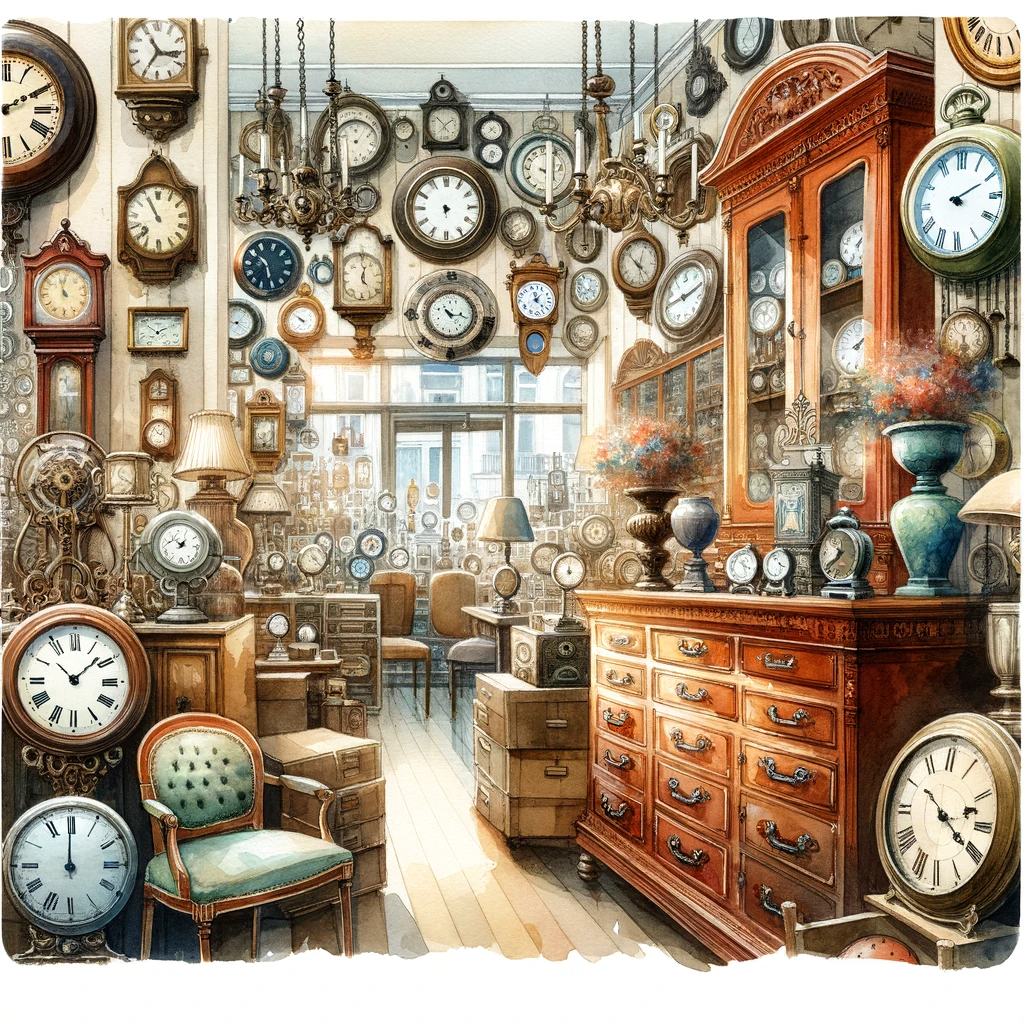
The world of wall clock designs is incredibly diverse, offering options for every taste and style preference. From the classic elegance of analog wall clocks to the modern convenience of digital displays and the cutting-edge technology found in smart wall clocks, there is something for everyone.
Moreover, exploring niche subtopics such as pendulum wall clocks reveals fascinating histories and intricate craftsmanship that can truly enhance our appreciation for these timekeeping devices.
As we delve into different types of wall clock designs, it becomes clear that these functional objects can go beyond merely telling time—they become statements reflecting our personal style and interests. So whether you’re drawn to the timeless charm of an analog clock or prefer the sleek innovation of a smart clock, remember that each tick of a wall clock serves as a reminder to cherish the present moment and make the most of our time.





